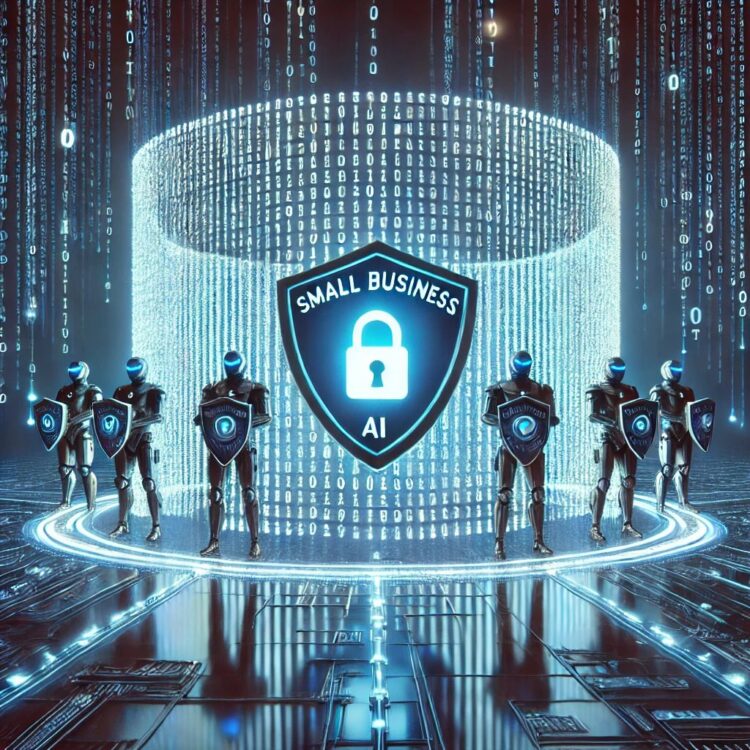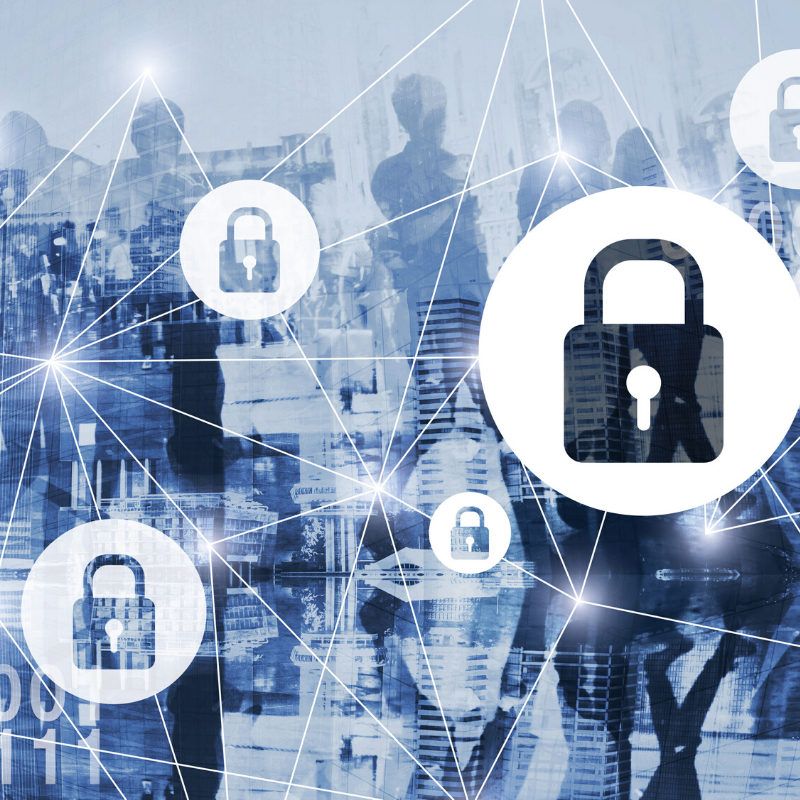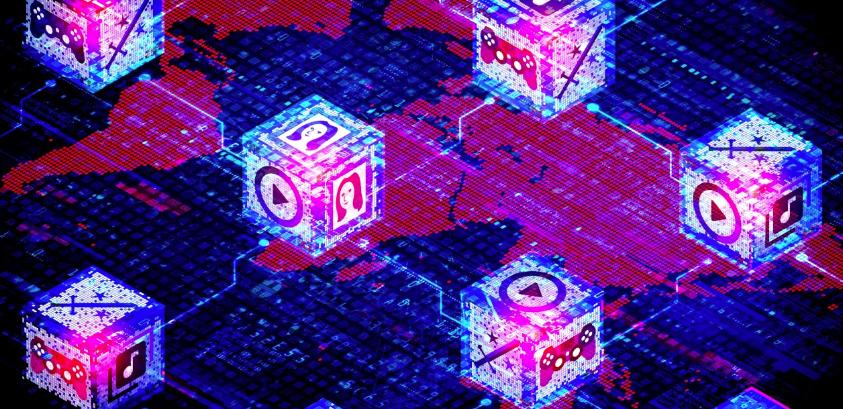In our increasingly interconnected world, where every interaction, transaction, and piece of information flows through digital channels, the imperative to safeguard these virtual realms has never been more critical. The relentless proliferation of cyber threats, from sophisticated nation-state attacks to pervasive ransomware, makes cybersecurity defenses not just an IT concern but a fundamental business necessity. Protecting digital assets—which encompass everything from sensitive customer data and intellectual property to critical operational systems—is paramount for maintaining trust, ensuring business continuity, and preserving financial stability. It’s about building a robust, multi-layered shield in the face of an ever-evolving digital battlefield, ensuring the safety and integrity of our most valuable virtual possessions.
The Evolving Threat Landscape: Why Defenses Must Adapt
To truly appreciate the urgency and complexity of modern cybersecurity defenses, it’s essential to understand the dynamic and often asymmetrical nature of the threat landscape. Attackers are constantly innovating, forcing defenders to perpetually adapt.
A. The Digital Transformation Imperative
Businesses globally are undergoing rapid digital transformation, moving more operations, data, and services online. While this offers immense benefits, it simultaneously expands the attack surface, creating more entry points for malicious actors.
- Cloud Migration: Shifting infrastructure and applications to the cloud offers scalability and flexibility but introduces new security considerations, including shared responsibility models and securing cloud configurations.
- Remote Workforces: The widespread adoption of remote and hybrid work models has dispersed corporate networks, making traditional perimeter-based security less effective and increasing the vulnerability of endpoints.
- IoT and OT Convergence: The proliferation of Internet of Things (IoT) devices and the convergence of IT (Information Technology) with OT (Operational Technology) in industrial environments introduce new vulnerabilities, as many IoT/OT devices lack robust built-in security.
- Supply Chain Expansion: Modern businesses rely on complex supply chains involving numerous third-party vendors and partners. A vulnerability in one link of this chain can expose the entire ecosystem, as seen in numerous high-profile supply chain attacks.
B. The Proliferation and Sophistication of Cyber Threats
Cyber threats are no longer just about individual hackers; they encompass highly organized, well-funded, and increasingly sophisticated entities.
- Ransomware as a Service (RaaS): Ransomware has evolved from opportunistic attacks to a highly organized, often state-sponsored, criminal enterprise. RaaS models allow less technically proficient criminals to deploy devastating attacks, making it a pervasive and costly threat.
- Advanced Persistent Threats (APTs): These are stealthy and continuous computer hacking processes, often targeting specific entities for business or political motives. APTs involve highly skilled attackers who gain prolonged access to a network and remain undetected for extended periods.
- Phishing and Social Engineering: Despite technological advancements, human vulnerabilities remain a primary attack vector. Phishing, spear-phishing, and other social engineering tactics continue to be highly effective at tricking individuals into revealing credentials or installing malware.
- Zero-Day Exploits: These are vulnerabilities in software that are unknown to the vendor or public, giving attackers a “zero-day” to exploit them before a patch is available. Discovering and exploiting these requires significant resources and expertise.
- Insider Threats: Malicious or negligent actions by current or former employees, contractors, or business partners can pose significant risks, highlighting the importance of robust internal controls and monitoring.
- AI-Powered Attacks: Attackers are increasingly leveraging AI and machine learning to create more sophisticated malware, evade detection, and automate aspects of their campaigns, forcing defenders to employ similar technologies.
C. Regulatory and Compliance Pressures
Beyond the direct threat of attacks, organizations face increasing regulatory scrutiny and the need to comply with a growing number of data privacy and security regulations worldwide.
- GDPR, CCPA, LGPD, etc.: Regulations like the General Data Protection Regulation (GDPR) in Europe, the California Consumer Privacy Act (CCPA) in the US, and Indonesia’s Personal Data Protection Law (UU PDP) impose strict requirements on how personal data is handled and protected, with severe penalties for non-compliance.
- Industry-Specific Regulations: Sectors like finance (PCI DSS), healthcare (HIPAA), and critical infrastructure (NIST, ISO 27001) have specific, often stringent, cybersecurity requirements.
- Reputational Damage: Beyond fines, data breaches and security incidents can severely damage an organization’s reputation, eroding customer trust and leading to long-term business impact.
In this challenging environment, a static, reactive approach to cybersecurity is no longer sufficient. Organizations must adopt dynamic, multi-layered defense strategies that anticipate, detect, and respond to threats with agility and precision.
Foundational Pillars of Robust Cybersecurity Defenses
Effective cybersecurity is not a single product or solution; it’s a strategic, multi-faceted approach built upon several foundational pillars that work in concert to create a resilient defense.
A. Identity and Access Management (IAM)
Controlling who has access to what, and under what conditions, is the bedrock of modern cybersecurity. Identity and Access Management (IAM) systems ensure that only authorized users can access specific resources.
- Strong Authentication: Moving beyond simple passwords to multi-factor authentication (MFA) or adaptive authentication (based on context like location or device) is crucial.
- Least Privilege Principle: Users and systems should only be granted the minimum level of access necessary to perform their required tasks. This limits the damage an attacker can do if credentials are compromised.
- Role-Based Access Control (RBAC): Assigning permissions based on job roles rather than individual users simplifies management and ensures consistency.
- Privileged Access Management (PAM): Special controls for highly sensitive accounts (e.g., administrators, root users) that could cause extensive damage if compromised. This includes session recording, just-in-time access, and password vaulting.
- Lifecycle Management: Automating the provisioning and de-provisioning of user accounts and access rights throughout their employment lifecycle.
B. Network Security: Defending the Perimeter and Beyond
Network security focuses on protecting the integrity, confidentiality, and accessibility of computer networks and data. While traditional perimeter defenses are still relevant, the concept has expanded.
- Firewalls (Next-Gen): Beyond basic packet filtering, modern firewalls (Next-Generation Firewalls – NGFWs) inspect application-layer traffic, provide intrusion prevention, and can integrate with threat intelligence.
- Intrusion Detection/Prevention Systems (IDS/IPS): Actively monitor network traffic for suspicious activity or known attack signatures, alerting security teams or blocking malicious traffic.
- Segmentation: Dividing large networks into smaller, isolated segments (e.g., VLANs, micro-segmentation). This limits lateral movement for attackers, containing breaches to a smaller area.
- Virtual Private Networks (VPNs): Creating secure, encrypted connections for remote access to corporate resources.
- Zero Trust Architecture: A revolutionary approach that assumes no implicit trust inside or outside the network. Every user, device, and application attempting to access a resource must be continuously verified, authorized, and secured. This moves security from a perimeter model to an identity- and data-centric model.
C. Endpoint Security: Protecting the Front Lines
Endpoints (laptops, desktops, mobile devices, servers) are often the initial point of compromise. Robust endpoint security is essential.
- Antivirus/Anti-Malware: Signature-based and heuristic detection of known and unknown malicious software.
- Endpoint Detection and Response (EDR): Advanced solutions that continuously monitor endpoint activity, detect suspicious behaviors, and provide powerful capabilities for investigation and automated response.
- Data Loss Prevention (DLP): Prevents sensitive data from leaving the organization’s control, whether accidentally or maliciously, by monitoring, detecting, and blocking unauthorized data transfers.
- Patch Management: Systematically applying software updates and security patches to operating systems and applications to remediate known vulnerabilities.
- Device Management: Mobile Device Management (MDM) and Unified Endpoint Management (UEM) solutions to secure, configure, and manage corporate and personal devices used for work.
D. Data Security and Privacy
Protecting sensitive data throughout its lifecycle (at rest, in transit, and in use) is paramount.
- Encryption: Encrypting data wherever it resides—on storage drives, in databases, or as it travels across networks—renders it unreadable to unauthorized parties.
- Data Classification: Categorizing data based on its sensitivity (e.g., public, internal, confidential, restricted) to apply appropriate security controls.
- Data Backup and Recovery: Implementing robust, immutable backup strategies and disaster recovery plans to ensure data availability and rapid restoration after an incident or data loss.
- Privacy by Design: Incorporating privacy considerations into the design of systems and processes from the very beginning, adhering to principles of data minimization and purpose limitation.
E. Security Operations (SecOps) and Incident Response
Even with the best defenses, breaches can occur. Effective Security Operations and Incident Response are crucial for minimizing damage.
- Security Information and Event Management (SIEM): Centralized logging and analysis of security events from across the entire IT infrastructure to detect threats and facilitate investigations.
- Security Orchestration, Automation, and Response (SOAR): Automating security operations tasks, incident response playbooks, and integrating various security tools to accelerate detection and response.
- Incident Response Plan: A well-defined, practiced plan detailing roles, responsibilities, communication strategies, and technical steps to be taken before, during, and after a cybersecurity incident.
- Threat Intelligence: Continuously gathering and analyzing information about emerging threats, vulnerabilities, and attack methodologies to proactively enhance defenses.
- Managed Detection and Response (MDR): Outsourcing advanced threat hunting, monitoring, and incident response to specialized third-party providers.
Strategic Approaches to Building Resilient Cybersecurity Defenses
Beyond individual pillars, successful cybersecurity defense requires a holistic and proactive strategic approach that permeates the entire organization.
A. Adopt a Zero Trust Security Model
Moving away from the traditional “trust but verify” perimeter model, Zero Trust is a strategic imperative. It operates on the principle of “never trust, always verify.”
- Continuous Verification: Every user, device, and application is continuously authenticated and authorized before gaining access to any resource, regardless of whether they are inside or outside the traditional network perimeter.
- Micro-segmentation: Networks are broken down into granular segments, and access policies are applied at the workload level, severely limiting lateral movement for attackers.
- Least Privilege Access: Access is granted on a strict need-to-know basis and for the shortest possible duration.
- Security Analytics and Automation: Extensive logging, monitoring, and automated policy enforcement are essential to verify and adapt access continuously.
Implementing Zero Trust is a journey that significantly enhances an organization’s resilience against evolving threats, especially in cloud and hybrid environments.
B. Embrace a Security by Design Philosophy (DevSecOps)
Security should not be an afterthought or a bolted-on component. Security by Design (often encapsulated in DevSecOps) integrates security practices throughout the entire software development and IT operations lifecycle.
- Shift-Left Security: Moving security considerations and testing as early as possible into the development process (e.g., static code analysis, dynamic application security testing in CI/CD pipelines).
- Automated Security Testing: Integrating automated security scans (vulnerability scanning, penetration testing tools) into CI/CD pipelines to catch flaws before deployment.
- Secure Coding Practices: Training developers on secure coding standards and ensuring they are followed.
- Infrastructure as Code (IaC) Security: Defining security configurations for infrastructure directly in code, enforcing consistency and preventing misconfigurations.
- Shared Responsibility: Fostering a culture where security is everyone’s responsibility, not just the security team’s.
C. Prioritize Risk Management and Threat Intelligence
Effective cybersecurity is fundamentally about managing risk. This involves understanding what’s most valuable and what the most likely threats are.
- Asset Inventory and Classification: Knowing what digital assets you have and how critical and sensitive they are. You can’t protect what you don’t know exists.
- Risk Assessments: Regularly identifying, analyzing, and evaluating potential threats and vulnerabilities, and assessing their potential impact.
- Threat Intelligence Integration: Continuously ingesting and acting upon external threat intelligence (e.g., indicators of compromise, known attack patterns, emerging malware families) to proactively strengthen defenses and inform security decisions.
- Vulnerability Management: Systematically identifying, assessing, and remediating vulnerabilities across your software and infrastructure through regular scanning and penetration testing.
D. Implement Strong Data Governance and Compliance Frameworks
Beyond technical controls, robust data governance and adherence to compliance frameworks are crucial for protecting digital assets.
- Data Classification Policies: Implementing clear policies for classifying data based on its sensitivity and regulatory requirements.
- Data Lifecycle Management: Defining how data is collected, stored, processed, used, archived, and ultimately disposed of in a secure and compliant manner.
- Regular Audits and Assessments: Conducting regular internal and external audits to ensure compliance with relevant regulations and internal security policies.
- Training and Awareness: Continuously training employees on data handling best practices, privacy policies, and compliance requirements.
E. Develop a Robust Business Continuity and Disaster Recovery (BC/DR) Plan
Cybersecurity isn’t just about preventing attacks; it’s also about ensuring that if an attack occurs, the business can quickly recover and continue operations.
- Data Backup Strategy: Implementing regular, off-site, and immutable backups of critical data and systems.
- Recovery Time Objective (RTO) and Recovery Point Objective (RPO): Defining clear targets for how quickly systems must be restored and how much data loss is acceptable after a disaster.
- Incident Response Drills: Regularly practicing the incident response plan through tabletop exercises and simulated attacks to identify gaps and improve coordination.
- Redundancy and High Availability: Designing systems with redundancy and failover mechanisms to minimize downtime in the face of outages or attacks.
Emerging Trends and Future Directions in Cybersecurity Defenses
The cybersecurity landscape is a relentless arms race. As attackers leverage new technologies, so too must defenders. Several key trends are shaping the future of digital asset protection.
A. AI and Machine Learning for Enhanced Detection and Response
The integration of AI and Machine Learning (ML) is revolutionizing cybersecurity defenses, moving beyond signature-based detection to more proactive and intelligent threat identification.
- Behavioral Analytics: AI/ML algorithms analyze normal user and system behavior, enabling the detection of anomalies that could indicate insider threats, compromised accounts, or advanced malware activity.
- Automated Threat Hunting: ML models can continuously scan vast amounts of data (logs, network traffic) to identify subtle patterns indicative of sophisticated attacks that might evade traditional defenses.
- Automated Incident Response: AI-powered SOAR platforms can automate aspects of incident response, such as isolating infected machines, blocking malicious IPs, and enriching alert data, significantly reducing response times.
- Predictive Security: ML can predict future attack vectors or vulnerabilities based on historical data and emerging threat intelligence.
B. Extended Detection and Response (XDR)
Building on EDR, XDR solutions integrate security data from a wider array of sources across the entire IT environment—endpoints, networks, cloud applications, identity systems, and email.
- Unified Visibility: XDR provides a holistic view of an organization’s security posture, breaking down data silos that limit traditional security tools.
- Contextualized Threat Detection: By correlating data across multiple domains, XDR can build a more complete picture of an attack chain, identifying sophisticated threats that might otherwise go unnoticed.
- Accelerated Investigations: Centralized data and automated correlation streamline investigations, allowing security analysts to respond faster and more effectively.
C. Cloud-Native Security and Cloud Security Posture Management (CSPM)
As cloud adoption grows, security solutions are becoming increasingly cloud-native.
- CSPM (Cloud Security Posture Management): Tools that continuously monitor cloud environments for misconfigurations, compliance deviations, and security vulnerabilities across IaaS, PaaS, and SaaS services.
- Cloud Workload Protection Platforms (CWPP): Solutions specifically designed to protect workloads running in cloud environments (VMs, containers, serverless functions) across their entire lifecycle.
- Serverless Security: Dedicated approaches to securing ephemeral serverless functions, including code scanning, runtime protection, and granular access controls.
D. Quantum-Safe Cryptography
The advent of quantum computing poses a significant long-term threat to current public-key cryptography (e.g., RSA, ECC). Quantum-safe cryptography (also known as post-quantum cryptography – PQC) is a critical area of research and development.
- Developing New Algorithms: Creating new cryptographic algorithms that are resistant to attacks from future large-scale quantum computers.
- Standardization and Transition: Efforts are underway globally to standardize these new algorithms and plan a methodical transition from current cryptographic standards, a massive undertaking that will require years of work.
- Hybrid Approach: Initially, organizations may adopt hybrid cryptographic approaches that combine both classical and post-quantum algorithms for added security during the transition phase.
E. Focus on Human Factors and Security Awareness Training
Recognizing that the human element remains a primary vulnerability, the focus on human factors in cybersecurity will intensify.
- Advanced Security Awareness Training: Moving beyond simple click-through training to more engaging, personalized, and behavior-driven training programs that adapt to individual user risks.
- Phishing Simulations and Exercises: Regularly testing employee susceptibility to phishing and other social engineering tactics to identify weak points and reinforce learning.
- Cybersecurity Culture: Cultivating a strong, positive cybersecurity culture where employees understand their role in protecting digital assets and are empowered to report suspicious activity without fear of reprisal.
F. Identity-First Security and Decentralized Identity
Identity will increasingly become the primary control plane for security, extending beyond traditional IAM.
- Identity Governance and Administration (IGA): Ensuring that identities are properly managed, provisioned, and de-provisioned across complex environments.
- Decentralized Identity (DID): Exploring blockchain-based or distributed ledger technologies for self-sovereign identity, where individuals have more control over their digital identities, potentially reducing the reliance on centralized identity providers which are attractive targets for attackers.
Conclusion
In the relentless digital age, where innovation is paramount, the shadow of evolving cyber threats looms large. Cybersecurity defenses are no longer a mere technical requirement but an absolute imperative for the resilience, reputation, and continuity of every organization. Protecting digital assets—from the most sensitive data to the most critical operational systems—demands a sophisticated, multi-layered, and perpetually adapting strategy.
The journey to robust digital protection is built upon foundational pillars: ironclad Identity and Access Management, dynamic network security that extends beyond traditional perimeters, vigilant endpoint protection, and comprehensive data security and privacy measures. Crucially, these technical controls must be supported by proactive security operations and a well-drilled incident response capability.
Beyond these fundamentals, the strategic adoption of a Zero Trust model, a pervasive ‘Security by Design’ philosophy woven into every development process (DevSecOps), and a continuous focus on risk management fueled by cutting-edge threat intelligence, are paramount. The future of cybersecurity is being shaped by transformative trends like the pervasive integration of AI and Machine Learning for advanced threat detection, the holistic visibility offered by XDR, and the critical development of quantum-safe cryptography. However, at its heart, effective defense will always rely on recognizing and fortifying the human element through relentless awareness and a strong security culture.
Ultimately, protecting digital assets is an ongoing commitment, a continuous race against an adaptive adversary. By embracing these evolving defenses and fostering a security-first mindset, organizations can build the robust, intelligent, and resilient shields necessary to safeguard their invaluable digital landscapes, ensuring trust, driving innovation, and securing their place in the future.









